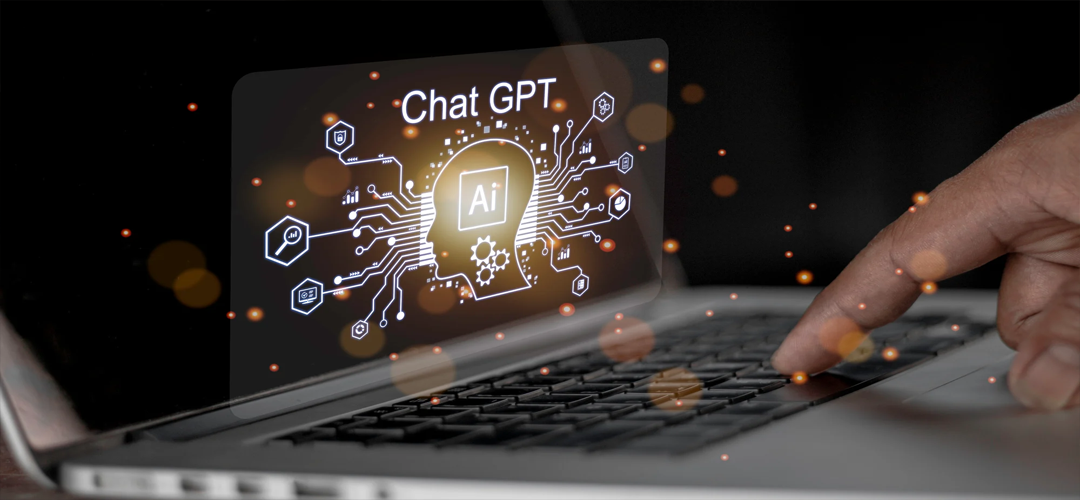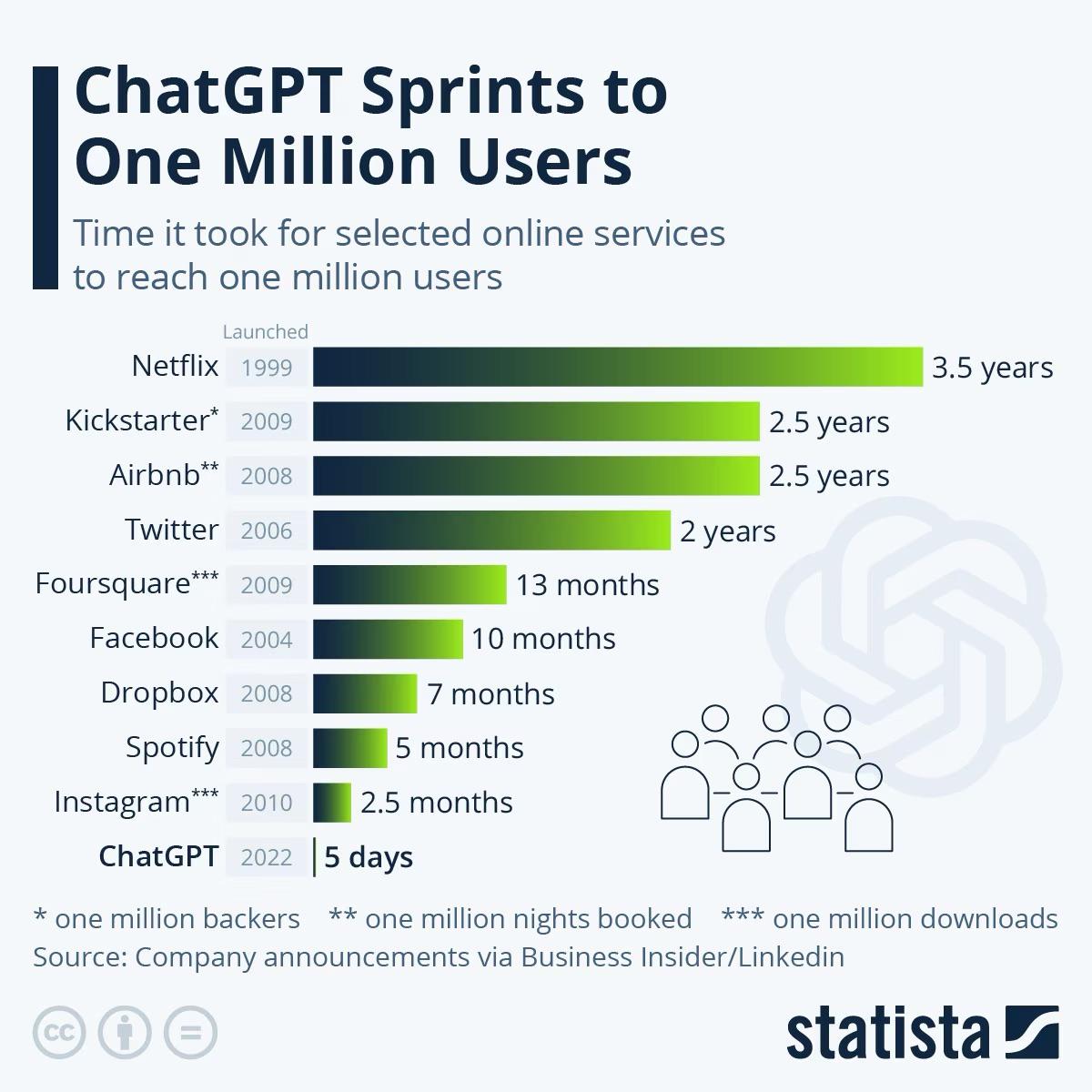Chatgpt: Transforming or Trivialising Education?
April 15, 2023 | Expert Insights

There is a universally unbridled enthusiasm among all segments of society to delve into the ocean of possibilities opened by the AI-powered ChatGPT. Amidst a host of other transformations that it promises, the impact on the educational landscape could be monumental where it has the potential to reshape our educational tools. Whether this will be to the benefit of humankind, only time will tell.
Background
Since late last year, a revolution seems to be taking place in the field of chatbots powered by AI, threatening to change the power dynamics of the internet world.
While ChatGPT is the most discussed one, it is not the only player in the field, which is getting intensely competitive and crowded. Microsoft soon also added Bing, capable of conducting open-ended text conversations on any subject under the sun using its Bing internet search engine. Google came out with its Bard in March this year. Conceived as a creative tool to compose poetry, it is fast progressing into generating bigger ideas. Chinese search tool Baidu was not to be left behind and came up with Ernie (Enhanced Representation through Knowledge Integration). The western media claim that Ernie's live demonstration was fake as it was recorded.
In classrooms across the world, educators are in a panic. They fear that it would become almost impossible for them to assess the quality of home assignments as the most original ones will fade compared to the ones written by chatbots! The Atlantic claimed in an article that "The College Essay Is Dead” and reflected the reigning confusion when it asserted that nobody was prepared for how AI would transform academia. Teachers are hard-pressed to catch students using chatbots to cheat on their homework. It will become even more difficult for universities to verify the authenticity of submitted research papers. Even more dangerous is the ability of chatbots to emit facts and figures which may be faulty or entirely wrong.
More concerning is the fact that it is not only the students who are using ChatGPT on the sly to burnish their assignments; some teachers, too, confessed in a New York Times article that "the app provided more detailed and useful feedback on students' papers than the teacher could have done by himself, in a tiny fraction of the time!"

Analysis
As the debate rages on, there are several areas where it is being mooted that ChatGPT would improve the quality of education.
Chat GPT has the potential to optimise this communication by automating repetitive tasks like grading, record-keeping, and providing feedback on assignments. By reducing the time spent on these administrative tasks, educators can focus on personalising their teaching approach and addressing individual student needs.
While it may discourage visits to the library, it will bring immense, almost unlimited, learning resources to our fingertips. A chatbot can quickly provide information, summarise complex ideas, and generate customised study materials based on a student's learning preferences and pace. This capability can complement traditional teaching methods, textbooks, and learning resources, assisting students in grasping concepts more effectively and at their own pace.
Furthermore, ChatGPT can create adaptive learning platforms that adjust the content and delivery based on a student's performance and progress. This can lead to a more personalised learning experience, allowing students to focus on challenging areas and reinforcing their understanding of topics they have already mastered.
Teachers have always found it difficult to accurately assess the learning capability and the academic strengths and weaknesses of their students, especially when hidden amidst the class, some students may actually be struggling to cope. ChatGPT can analyse students' responses, performance data, and interactions to identify these learning gaps. By recognising these knowledge gaps, educators can develop targeted interventions and tailor their teaching to address specific learning challenges.
This data-driven approach to teaching enables a more accurate assessment of student's strengths and weaknesses, allowing for personalised learning plans and more effective teaching strategies.
Just like crowdsourcing, chatbots too can pool students' knowledge and problem-solving abilities and foster a collaborative environment in schools. ChatGPT encourages students to engage in peer-to-peer learning, enhancing their critical thinking and problem-solving skills by providing a platform for real-time communication and collaboration.
Additionally, ChatGPT can facilitate collaboration among educators, allowing them to share best practices, teaching strategies, and resources. This collaborative approach can lead to the development of more effective teaching methods and improved educational outcomes for students.
But there are clear and present dangers that must not be set aside in our enthusiasm to adopt a technology that we are scarcely prepared to comprehend in its entirety.
For one, overreliance on AI tools may reduce human interaction and critical thinking abilities, as students may become dependent on technology for problem-solving and learning. Issuance of calculators to students in classrooms had in the past shown a growing tendency to avoid even the basic arithmetical calculations without their aid.
Another concern is the potential for AI systems to inadvertently reinforce existing biases and inequalities. As AI models are trained on vast amounts of data, they may perpetuate the biases present in those datasets. This can lead to biased decision-making and recommendations, disproportionately affecting marginalised groups.
To harness the full potential of ChatGPT in education, it is crucial to establish a balance between technology and human-cantred pedagogy. Stakeholders, including educators, policymakers, and technology developers, must ensure that AI tools are used responsibly and ethically. This involves continuously monitoring the use of AI in education, addressing any biases or unintended consequences, and actively working to improve the technology in a way that promotes inclusivity and fairness.
Furthermore, it is essential to involve educators in developing and implementing AI-based tools like ChatGPT. By incorporating their expertise and understanding of pedagogy, these tools can be designed to augment, rather than replace, the role of educators. This can lead to more effective teaching methods and improved learning outcomes for students.
In addition to the involvement of educators, it is crucial to consider the privacy and data security concerns associated with the use of AI in education. Schools and institutions must implement robust data protection measures to safeguard sensitive student information. Transparency regarding collecting, storing, and using student data is essential to maintaining trust between educational institutions, students, and their families.
Lastly, it is important to acknowledge the digital divide between various socioeconomic groups and regions. To ensure equitable access to the benefits of AI-driven education, policymakers and stakeholders must address the disparities in access to technology, internet connectivity, and digital literacy. This may involve investing in infrastructure, providing affordable devices and connectivity options, and developing educational programs that teach digital skills to students and educators alike.
Some are looking at technological solutions to the chatbot invasion. A Princeton student has claimed to have created a programme called GPTZero to detect chatbot-generated writing. However, such tools can easily be fooled by paraphrasing etc. Others have asked that products generated by ChatGPT must carry an easily discernible 'watermark' to enable teachers to detect the use of AI. However, this would substantially add to the cost of developing these tools, whose greatest attraction remains their free and unhindered access.
Assessment
- ChatGPT has the potential to bring about significant changes in the education sector, provided that it is utilised thoughtfully and with an emphasis on enhancing human potential. By striking a balance between technology and human-centered pedagogy, addressing biases and inequalities, and ensuring responsible and ethical use, AI tools like ChatGPT can be effectively harnessed to transform education.
- By enhancing teacher-student interaction, supplementing learning resources, identifying learning gaps, and fostering collaboration, ChatGPT can contribute to developing more personalised, efficient, and engaging educational experiences. However, the successful integration of ChatGPT in education relies on the concerted efforts of educators, policymakers, and technology developers to ensure that the technology is used in a manner that empowers both teachers and students, ultimately fostering an environment where human potential can thrive.








Comments